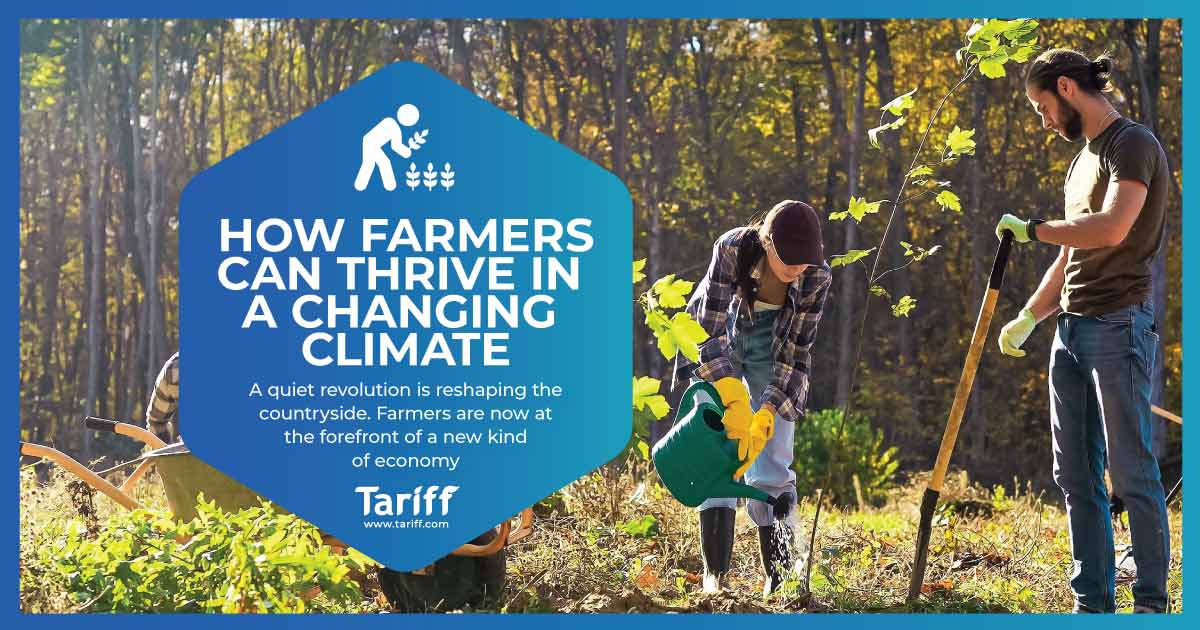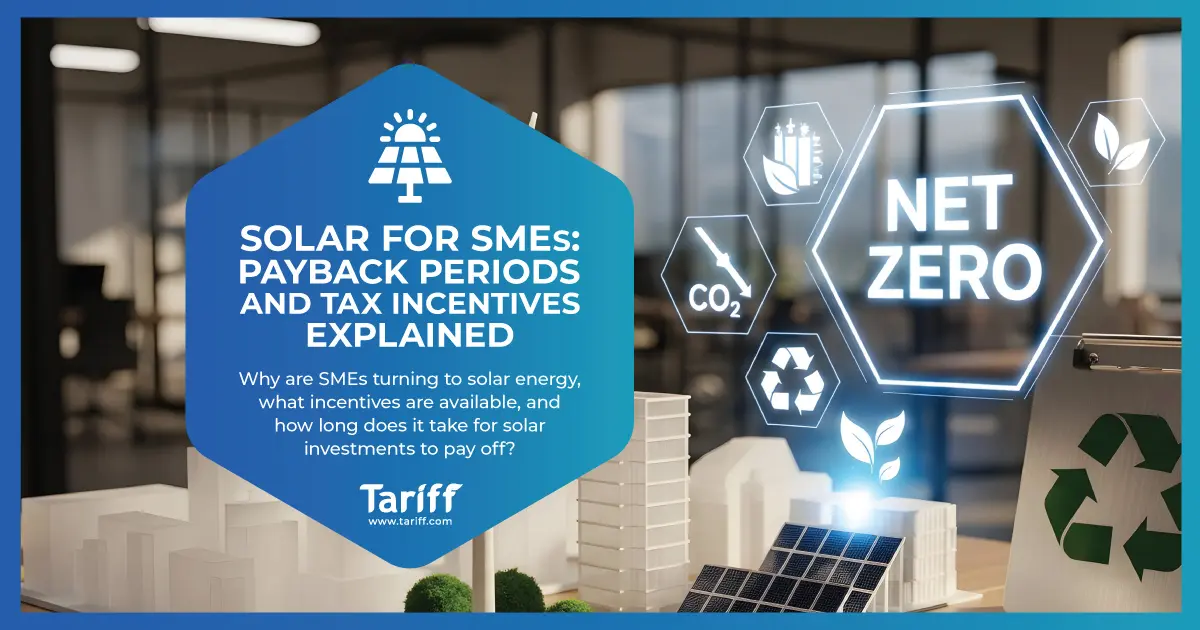The 6 Worst Sectors For Water Pollution
It’s fair to say that many have us have a preconceived idea of what pollution is. We often imagine haphazard piles of decaying litter by the roadside, thick smog across the skylines of the UK’s cities, and factories spewing out acrid black stacks of smoke and fumes. That’s only a partial story, and there’s many aspects of pollution that we don’t think about.
That’s especially true of water pollution, and it’s astonishing how such a crucial aspect is overlooked. Our water supplies are crucial for all life on Earth, from the foods we grow and the livestock we rear, through to the safety of the myriad ecosystems in our oceans, lakes and rivers.
This is where we’ll be focusing today – the issues we face with water pollution is one that bears significant scrutiny, and especially so in the sectors that contribute the most towards that ongoing issue. With Tariff’s latest article, we’ll be delving into the worst sectors for water pollution, as well as the key statistics that reveal those industries’ unwelcome contributions.
Debrief: Understanding What Water Pollution Is
In simple terms, water pollution is where a contaminant or harmful substance (usually chemicals, but it can also be a bacterial source) enters a supply of water. This could be a lake, stream, reservoir, or other freshwater source, but also extends to include our seas and oceans.
This introduction will make the water unsafe for consumption, and incredibly harmful to humans. This is how we get water-borne diseases such as typhoid and cholera, which have been the direct cause of millions of deaths globally, both historically and in the more modern world.
There are two primary types of water pollution:
- Surface Water Pollution: This encompasses all surface water sources, such as oceans, rivers, lakes, streams and reservoirs. It occurs when those harmful or hazardous substances enter that water source, such as through dumping of waste or accidental spills.
- Groundwater Pollution: This is water that comes from underground that’s been polluted through contaminants in the soil or Earth’s surface. It usually stems from pesticides and fertilisers, but can also be a result of landfill or septic materials seeping into the ground.
While there are other kinds of water pollution – such as thermal pollution (excessive heat from industrial-strength ) or suspended matter (litter and detritus floating at sea) – these are less prevalent, and often fall under the two categories we’ve discussed above.
Of course, while we’ve explored the different kinds of water pollution, there’s often overlap. Septic waste, for example, can form both groundwater pollution (through leaching into the ground) and surface water pollution (intentional or accidental dumping).
That also extends to industries, many of which can contribute towards water pollution in multiple different ways. Let’s break down some of the worst sectors for water pollution, and the impacts they have on water quality across the globe.
6 Of The Worst Sectors For Water Pollution
We’ve highlighted 6 of the biggest water polluting sectors, what they contribute towards worldwide water pollution, and the key statistics that warrant their inclusion on these less-than-ideal rankings.
1. Agriculture & Farming
While nobody is debating the necessity of farming and agriculture, both in the modern world and in its countless historical contributions, it’s equally true that modern rural industry has an indelible affect on water pollution. The reasons behind that impact are multi-faceted, of course, but crucial amongst these is the inexorable rise of consumer demand.
As more and more people demand more instantaneous results from an already-stretched-thin agricultural sector, and populations continue their steady increase, there’s a rising pressure on farmers and those working in farming. Alongside the well-documented water demands of the agricultural industry, there’s an increasing clamour to get food to the table quicker.
It’s lead, as inevitably it would, to a much higher rate of products being used, many of which are harmful for our water supplies. Chemicals in pesticides, fertiliser and other crop supplements are immensely damaging to our water supplies, accounting for an estimated 40% of all water pollution in the UK, according to the latest governmental figures.
That doesn’t end there, either. Whenever there is rain, the fertilisers and pesticides used on crops, coupled with the waste from livestock, washes chemicals, bacteria, and viruses into nearby waterways. The nutrients in animal waste also cause what is known as nutrient pollution, where excess nitrogen and phosphorus seeps into water sources.
Today, nutrient pollution is widely regarded to be the primary threat to global water quality, creating noxious swamps of algal blooms that are hazardous to both humans and wildlife. While changing dietary habits have made a difference, it’s equally true that the farming sector has a long way to go before it shakes off its reputation as one of the worst sectors for water pollution.
2. Sewage & Wastewater
Across the course of our day, almost all of us will use water in some capacity. Whether that’s in showering or bathing, making a cup of tea, or simply using the toilet, water usage is practically unavoidable. That’s only increased alongside rising populations and demands, with statistics estimating the average UK resident consumes around 140 litres of water per day.
While the impact of wasting water is something we’ve discussed at great lengths, it’s the links to water pollution we’ll be placing under the metaphorical microscope today. The UN estimates that around 80% of all global wastewater makes its way back into ecosystems without the proper treatment.
That’s predominantly in countries that lack the proper infrastructure to support a robust sewage system. This contributes to an ongoing situation where around 1.8 billion people use a source of drinking water every day that contains high levels of faeces, risking a range of illnesses including typhoid, cholera, and dysentery.
It’s equally true that there’s an issue closer to home. Charity group Surfers Against Sewage revealed that there were over 3,000 separate incidents of sewage dumped onto UK beaches, into our water supply, or back into the seas around our islands.
In fact, the latest estimates from the BBC places wastewater and untreated sewage as contributing a massive 35% to the UK’s overall water pollution statistics.
3. Oil Spillages & Leaks
While we often only hear of the headline spillages like the Deepwater Horizon explosion in the Gulf of Mexico back in 2010, it’s equally true that there’s a multitude of oils spills that go unreported.
In fact, it’s everyday consumers who are inadvertently responsible for most oil pollution in our seas and oceans. Much of it comes from the oil and fuels that leak from the vehicles we drive, the industries that often use a significant amount of fuel in the production processes, as well as the town and cities many of us live in.
The BBC’s recent research shows that those unintentional emissions from vehicles, homes and work account for a startling 18% of the UK’s water pollution. That stems from what’s called “run off” – drips and leaks from those sources that we might never realise are contributing.
One of the more startling realisations from our research here at Tariff is that, despite their prevalence in the media, larger-scale oil spills like the BP incident in 2010, these only account for between 10% and 15% of all oil polluting our waters.
4. Marine Dumping
The name given to the practice – both legal and illegal – of dumping waste and rubbish at sea, it’ll no doubt come as a surprise to see marine dumping make the list of the worst sectors for water pollution. Indeed, marine dumping is less an industry and more a byproduct of multiple, conglomerated sectors.
You’d imagine this doesn’t happen in the UK, and for the most part you’d be right. Larger-scale marine dumping is still incredibly prevalent across other countries, however, and especially those that don’t have the same resources we’re privileged to have here in the UK.
For some countries, this is their only option to dispose of waste, and while it’s incredibly detrimental to the planet, it can often be the only solution. Even in the US, the EPA has designated sites for disposal of waste, often out towards the far reaches of the Pacific Ocean.
While we do have more robust waste management in the UK, it’s equally true that this still happens. The stereotypical example is of the shopping trolleys and rubbish bags in canals and waterways, but our coastlines can often fall victim to those same issues too, especially on busy summer days where the foot traffic brings with it both the right and the wrong sorts of people.
5. Industrial Waste
A byproduct of a range of major industries – especially those in manufacturing, construction and mining – industrial waste is far more common than you might initially think. While there’s a range of waste that is safely disposed of, there’s still a notable portion that isn’t, especially in sites that are improperly or illegally run.
These will very often have poor waste management systems in place, or be operating in a shady way so as to skirt around stringent laws surrounding the disposal of hazardous materials. This is incredibly dangerous – the toxic chemicals and potentially harmful pollutants run the risk of running into water supplies and contaminating drinking water.
This is true of both groundwater – wherein hazardous run-off bleeds into the ground and contaminates wells – and surface water, where waste is improperly disposed of and leaks chemicals into water sources like streams, rivers and lakes.
That’s not just hazardous to humans, either. While we’re naturally concerned about our own safety, there’s also the welfare of wildlife and the wider ecosystem to consider, both of which are drastically impacted by the introduction of hazardous waste.
6. Radioactive Chemicals
Radioactive pollution refers to any substance that emits radiation beyond what an environment release naturally. Typically, it is produced through the likes of uranium mining, the operations of nuclear power plants, the manufacture and testing of large-scale weaponry, and by universities and healthcare facilities that use radioactive materials for research.
Given the half-life of radioactive substances can last within environments for thousands of years, disposing of it presents a major challenge. In the US for example, the clean-up of the decommissioned Hanford nuclear weapons production site in Washington, required 56 million gallons of radioactive waste to be disposed, a process expected to cost over $100BN and take until 2060 to complete.
Though decommissioned after the Cold War, around a third of the 177 underground tanks that stored this radioactive waste at Hanford had leaked waste into the surrounding soil and groundwater by 1998.
Further leaks were reported in 2013 and 2017. While it’s a stand-alone example, The Hanford site demonstrates the harm that industries using radioactive substances can do to water sources.
The Murky Truth About Water Pollution & Climate Change
While we’ve looked at the worst sectors for water pollution, it’s their aftereffects that we’re perhaps most concerned about. Chief among these is the issue of our changing climate – arguably the biggest environmental issue we face – and water pollution is a major contributor towards the way our planet is transforming.
Not only does the contamination of water sources mean that humans are having to use bottled water (which naturally consumes more resources than the natural water sources we have), it also places more of a strain on the infrastructure needed to support those who’ve been made ill or hospitalised by the contaminated water.
Each year, polluted water afflicts the health of around 1 billion people globally. That’s one in 7 made ill by contaminated water annually with communities lower down the socio-economic ladder disproportionately affected as they are often those closest to the most polluting industries.
Alongside that, our environment is in equally dire straits. The health of any environment depends on the ecosystems that exist within them and the sustainability of the intricate webs of wildlife, plants, bacteria, and fungi. If just one of these groups of organisms is imperilled, the whole ecosystem can collapse, taking the environment with it.
Oxygen deprivation and thermal pollution are also major contributors to that. Our ecosystems are fragile, and fluctuations in temperature upset the delicate balance they’ve cultivated. That can and does lead to the loss of species, as we witnessed with the Bramble Cay melomys’ extinction reported in 2019 by National Geographic.
All of these are directly correlated with the impacts of water pollution, and without action, we run the risk of polluting our oceans and waterways even further. While we can feel powerless, there are options available.
Ensure Clear Waters Ahead With Tariff
Here at Tariff, we’ve long been a bastion for cleaner, greener energy for businesses across the UK. Whether that’s in our tailormade net-zero strategies designed to bring every company to the 21st century, or our dedication to sourcing the ideal deals for companies across the market, we’re committed to a brighter tomorrow.
That extends to finding a more sustainable water supplier, too. Traditionally, businesses could not choose where they got their water from. This changed in 2017 when the English water market was deregulated, meaning you and your business have the choice of where your water comes from.
The water sector is monitored by the regulatory authority, Ofwat, and all organisations can now compare business water suppliers and choose the best business water supplier for their needs. This is where Tariff truly excels, and where we can make a huge difference by sourcing a water supplier who has the right credentials, the right goals in mind, and the right ethos going forward.
Get in touch with our in-house energy experts today to discuss your options in much more detail, and to find out more about how changing your water supplier can make a major difference to both you, your business and the planet.


